“Are you happy?” This is the question that provokes anthropologist Jean Rouch and sociologist Edgar Morin’s path-forming 1961 cinéma vérité film, Chronique d’un Été. Quizzing metropolitan Parisians about their bonheur, the film has been canonised as a landmark in social science filmmaking. We see Rouch and Edgar on screen, huddled in smoke-filled rooms, ruminating on their position within the film and the ‘truth’ it unfolds. Today, Rouch is to be found on anthropology courses worldwide, recognised for his role in establishing the by now unassailable link between anthropology and filmmaking.
Morin as filmmaker, however, made less of a disciplinary splash. Chronique d’un Été did not mark an opening of sociology to filmmaking as a mainstreamed research method and sociological uses of the film camera were left to develop on the side-lines. Nonetheless, they found fertile ground there. ‘More-than-representational’ theory (Lorimer, 2005), ‘live’ or ‘lively’ methods (Back & Puwar, 2012; Bates, 2015, pp. 3-4), and the capacity of film to evoke the multidimensionality of social life (Vannini, 2015, p. 231) have all, in varying ways, lead sociologists to the film camera. Morin may remain a stranger to most methods courses, but sociological applications of the film camera have proliferated. They’re just a bit hard to find.
Why has sociology taken its time to mainstream filmmaking as a method? Let me sketch two answers. Firstly, documentary film corners the market of film as a representation of reality. Despite experiments in the documentary form – such as Chronique d’un Été – sociology students are not routinely schooled in the diversity of film as a medium. Without this training, the knee-jerk assumption is that ‘non-fiction’ filmmaking has certain tropes which lend credibility to on-screen truth-claims: talking-heads interviews, an authoritative, essayistic voiceover, the camera as witness to ‘reality’. For those called to the film camera as part of a methodological challenge to these methods themselves, documentary in its mainstream form offers little more than written (REFable) outputs.
This leads me to the second answer to my question: sociological filmmaking has an issue of distribution. A 2023 Rouch will find a host of anthropological or documentary film festivals for their work; a 2023 Morin will likely have to fashion themselves ‘interdisciplinary’. Sociology has far better filmmaking reference books (Bates, 2015) than it does screening platforms (Sociological Research Online’s new Beyond the Text section is a welcome addition here). Our disciplinary neighbours have wonderful, if hard won, resources – The Royal Anthropological Institutes’ Film section or Filmic Geographies, for example. While these platforms are explicitly interdisciplinary, and interdisciplinarity is the lifeblood of filmmaking as social research, the lack of a sociological parallel means that we (and our students) must travel that bit further afield to encounter the filmmaking practices that might inspire our own.
A free, two-week online film festival from 13-24 November 2023.
The answer is not more disciplinarity, but less of it. I have had the pleasure of working with Dr Lena Theodoropoulou on devising and curating Screening the Social: Beyond the Documentary a new, free, two-week online film festival which aims to showcase the creative breadth of film making research methods across the social sciences. Unlike most film festivals it has no specific theme. Rather, it aims to show the multiple ways in which film is leveraged to serve different epistemologies, at different points in the research process, with different analytical approaches applied to the filmed data, and with different ways of translating this into a ‘film’. The result is a varied programme of over 20 films on a vast array on topics, from agriculture to wild swimming. Some are feature-length, some only minutes long; some stray close to ‘documentary’, others stay well away.
Included on the programme are films by geographers, sociologists, anthropologists, artists, activists, and those who sit happily in-between. Each uses the film camera, or more correctly the moving image, in different ways. Nick Mai’s Caer (2021), for example, blends collaborative fictional methods with observational documentary filming to express the struggles for recognition and justice of Latina trans women working in the New York sex industry. Begüm Özden Firat’s The Lightwell (2020) takes a more sensual approach, using the film camera to capture the atmosphere of an Istanbul apartment block stairwell during lockdown and eschewing narrative entirely. Animation is a strong theme, including Forms of Care which uses stop-motion animation to illustrate a verbatim interview on everyday practices of palliative care. Online panel events will unpack some of the questions raised by the film programme, with more information available on the website.
Our intention with the festival is to provide a space for the cross-pollination that is vital to creative practices, and to give exposure to the multitude of ways that the film camera can be employed to explore social lives. As sociologists, we also hope that the festival serves those who, like us, like Morin and so many more, do sociology with the camera.
Please visit the Screening the Social website for more information and registration. Screening the Social is funded by the National Centre for Research Methods and Engage@Liverpool.
Dr Laura Harris is a cultural sociologist currently working as an Anniversary Fellow at the University of Southampton on a project called: ‘Experimental Filmmaking and the Cultural Sociology of Place.’ She has a background in art theory and sociology, and her interests include art and its institutions and visual research methods. She is book reviews editor of Cultural Sociology and convenes the British Sociological Association’s Sociology of Art Study Group.


